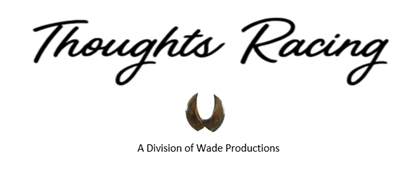Salute To Wally Parks: ‘How It Started,’ According To Parks
Second in a series, as told by Richard Parks
By Susan Wade
Richard Parks, the elder of National Hot Rod Association founder Wally Parks’ two sons, has compiled an extensive history of his family and of the events leading up to the establishment of drag racing’s premier sanctioning body. He has given permission to Thoughts Racing to share excerpts from his voluminous compilation. This is the second installment in a tribute to the remarkable man who passed away 15 years ago this September.

Here Richard Parks shares an article his father wrote for DRIVE Magazine – with a few editorial comments of his own . . .
‘HOW IT STARTED’ article for DRIVE Magazine, by Wally Parks
“People often ask, ‘Did you ever think it would turn out this way?’ – the ‘it’ being NHRA. The answer of course is ‘no,’ as none of us had the foresight, then, to anticipate that NHRA would ever become the world’s largest Motorsports sanctioning body.
Another often asked question is, ‘Why did you form the NHRA in the first place?’ – and the answer to that is two-fold, dating back to the early 1950s.
It was a time when my job as Hot Rod magazine’s editor allowed me to be involved with activities of the Southern California Timing Association (SCTA), which since 1938 had been conducting timed speed trials on dry lake beds in the Mojave desert north of Los Angeles. But there were other groups and associations conducting their own lakes meets, which added to the fragile surface’s deterioration and were creating some safety hazards due to a lack of proper control. So serious had these conditions become that California’s Highway Patrol had issued warnings threatening to close the dry lakes unless some corrections were made.
In addition to the SCTA, some of the other groups staging periodic events were the Russetta Timing Association, Western Timing Association, Bell Timing Association, and Mojave Timing Association, plus a Cal-Neva Timing Association that conducted its events on a lakebed near Reno, Nevada. It started at the original Oakland Roadster Show, produced by Al and Mary Slonaker in 1949, when a safety-minded Division of Motor Vehicles official, Doc Huggins, suggested a meeting of the varied associations, to see if a solution might be found.
The proposal resulted in a meeting at Oakland, followed by period get-togethers between the organizations in Fresno and Bakersfield, aimed at ironing out the problems of dry lakes abuse and overuse. As the series of meetings continued, there was little progress, except for proposals by a representative of Cal-Neva, C.W. “Tiny” Snell, who had detailed plans for foundation of the group as the American Hot Rod Conference.
But due to competitive nature of participating organizations, and an abundance of one-upsmanship, nothing was resolved or agreed to. Having attended every meeting and deeply disappointed in the lack of any results, I raised my hand and made the following statement: ‘We have been meeting for three years now and can’t even agree on a name for our gathering, so I am going back to Los Angeles to form a new National Association, based on individual memberships – and you are all invited to join.’”
That was Parks’ recollection, but his son had a thought or two about that. Richard Parks wrote, “Either my father’s memory was off or he was trying to clean up a messy and litigious past where agreement had been reached only to have members of Russetta push for a two-thirds vote called the Baney Rule that stopped Parks and Petersen from starting the AHRC. Also in error was that it took three years, which was closer to just a year of inaction. Dad concluded, “The declaration was followed by our announcement in the March 1951 issue of Hot Rod Magazine, confirming the new National Hot Rod Association formation. And within a short time thereafter, Tiny Snell, a dedicated crusader if there ever was one, became NHRA’s first National Field Director.”
Wally Parks’ article continued: “Dry lakes racing was never included as part of NHRA’s operations. Instead, we focused on memberships and the formation of car clubs, with ‘Dedicated to Safety’ our motto. It was the absence of speed and performance activities for its members that led to NHRA’s adoption and cultivation of a still new sport of drag racing, with its first rules borrowed from, guess where? – the Southern California Timing Association’s well established dry lakes guidelines.”
Richard Parks said, “My father’s declaration at the meeting was also ‘mis-remembered.’ He never did that according to the records. Petersen and Parks hatched the NHRA in secret. The AHRC had little to do with the dry lakes and everything to do with hot rod clubs. Drag racing became an issue two years later, in 1953.”
